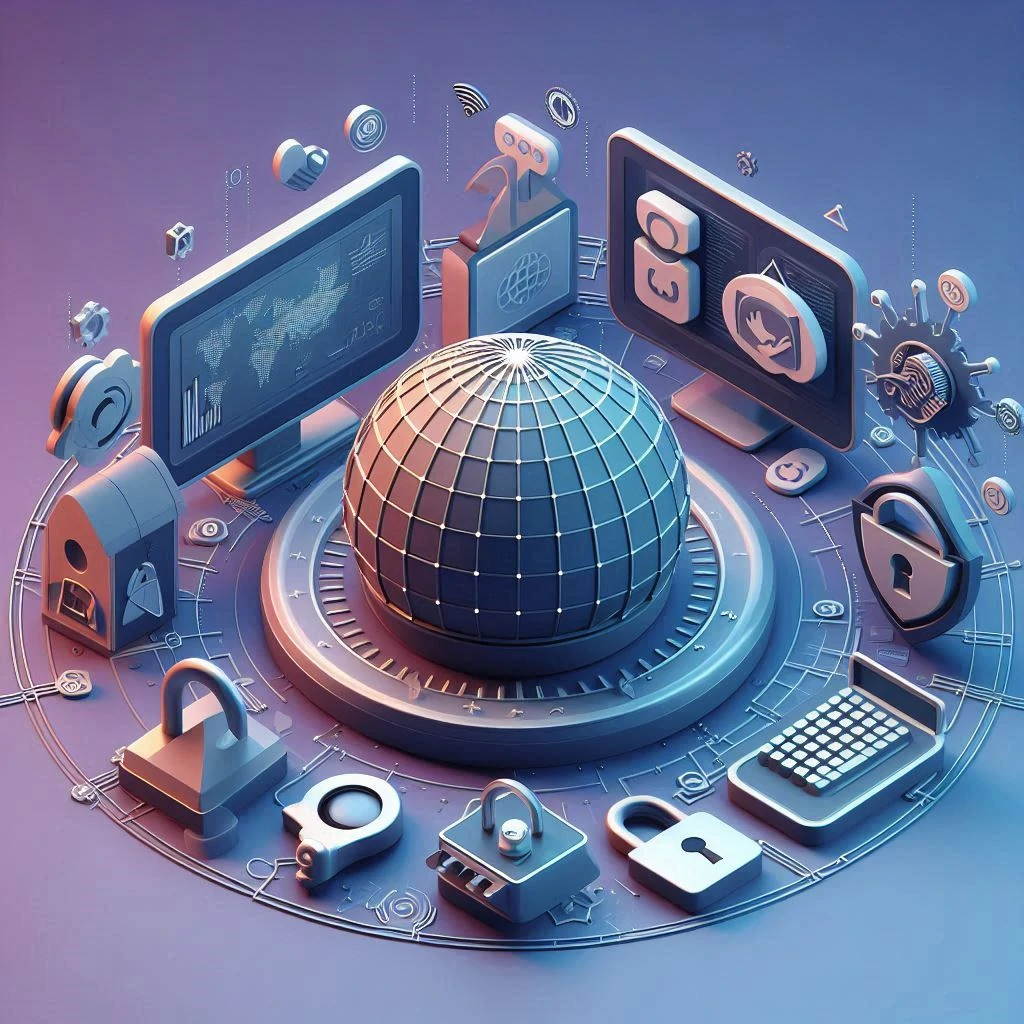In today’s digital age, cybersecurity in software development has become an essential priority for any modern company. Protecting sensitive data and preventing cyberattacks are crucial to maintaining customer trust and system integrity. In this beginner’s guide, we will explore the basics of cybersecurity and provide practical tips for implementing effective security measures.
What is Cybersecurity?
Cybersecurity refers to the practice of protecting systems, networks, and programs from digital attacks. These attacks often aim to access, modify, or destroy sensitive information, extort users, or disrupt normal business processes. In the context of software development, cybersecurity involves implementing measures and practices to ensure that the software is resistant to these attacks.
Importance of Cybersecurity in Software Development
- Protection of Sensitive Data: Developers handle a large amount of sensitive data, including personal user information, financial data, and intellectual property. Protecting this data is crucial to avoid security breaches that can result in financial losses and reputational damage.
- Regulatory Compliance: Many industries are subject to strict regulations regarding data protection. Non-compliance with these regulations can result in severe penalties and loss of customer trust.
- Prevention of Attacks: Cyberattacks can have devastating consequences, from service disruptions to the theft of confidential information. Implementing robust cybersecurity measures helps prevent these attacks and mitigate their effects.
Basic Principles of Cybersecurity
1. Confidentiality
Confidentiality ensures that sensitive information is accessible only to those authorized to view it. This principle is crucial for protecting data from unauthorized access and breaches. Here are some key aspects:
- Encryption: Encrypting data both at rest and in transit ensures that even if data is intercepted, it cannot be read without the decryption key.
- Access Controls: Implementing strict access controls, such as multi-factor authentication (MFA) and role-based access control (RBAC), helps ensure that only authorized users can access sensitive information.
- Data Masking: This technique involves hiding or obfuscating data to protect it from unauthorized access, especially in non-production environments.
2. Integrity
Integrity ensures that information remains accurate and unaltered except by authorized actions. This principle is vital for maintaining the trustworthiness of data. Key aspects include:
- Checksums and Hash Functions: These are used to verify the integrity of data by generating a unique value that changes if the data is altered.
- Digital Signatures: These provide a way to verify the authenticity and integrity of a message, software, or digital document.
- Version Control: Implementing version control systems helps track changes to data and software, ensuring that any unauthorized modifications can be identified and reverted.
3. Availability
Availability ensures that information and resources are accessible to authorized users when needed. This principle is essential for maintaining the functionality of systems and services. Key aspects include:
- Redundancy: Implementing redundant systems and data backups ensures that services remain available even if a component fails.
- Disaster Recovery Plans: These plans outline procedures for restoring systems and data in the event of a disaster, ensuring minimal downtime.
- DDoS Protection: Implementing measures to protect against Distributed Denial of Service (DDoS) attacks helps maintain the availability of online services.
Additional Principles
While the CIA Triad forms the core of cybersecurity principles, there are additional principles that further enhance security:
Non-repudiation: Providing proof of the origin and integrity of data, ensuring that a party cannot deny the authenticity of their signature on a document or a message that they sent.
Authentication: Verifying the identity of users and systems to ensure that only authorized entities can access resources.
Authorization: Ensuring that users have the appropriate permissions to access and perform actions on resources.

Cybersecurity Practices in Software Development
1. Secure Development
Secure development involves integrating cybersecurity practices at every stage of the software development lifecycle (SDLC). This includes conducting risk assessments, implementing security controls, and performing penetration testing.
2. Access Control
Implementing strict access controls is essential to ensure that only authorized individuals can access sensitive systems and data. This includes using multi-factor authentication (MFA) and identity and access management (IAM).
3. Data Encryption
Data encryption is a crucial technique for protecting information both in transit and at rest. Using robust encryption algorithms and keeping encryption keys secure is vital to ensuring data confidentiality.
4. Security Testing
Regular security testing, such as penetration testing and vulnerability assessments, helps identify and fix potential security flaws before they can be exploited by attackers.
5. Updates and Patches
Keeping software up to date with the latest security patches is essential to protect against known vulnerabilities. Establishing an efficient patch management process ensures that updates are applied promptly.
Tools and Solutions for Code Security Verification
1. Static Application Security Testing (SAST)
SAST tools analyze source code or compiled versions of code to identify security flaws. These tools can be integrated into your IDE and provide feedback during the development process. Examples include:
- SonarQube: An open-source platform for continuous inspection of code quality and security.
- Fortify Static Code Analyzer: An enterprise-level tool for identifying security vulnerabilities in source code.
2. Dynamic Application Security Testing (DAST)
DAST tools evaluate the security of running applications by simulating attacks. These tools help identify vulnerabilities that may not be apparent in the source code. Examples include:
- OWASP ZAP: An open-source tool for finding security vulnerabilities in web applications.
- Burp Suite: A comprehensive platform for web application security testing.
3. Software Composition Analysis (SCA)
SCA tools analyze open-source dependencies to identify known vulnerabilities. These tools help ensure that third-party components used in your software are secure. Examples include:
- Snyk: A developer security platform that provides real-time scanning and analysis for open-source dependencies.
- Black Duck: A tool for managing open-source security and license compliance.
4. Interactive Application Security Testing (IAST)
IAST tools combine elements of SAST and DAST to provide real-time security analysis during runtime. These tools help identify vulnerabilities in the context of the running application. Examples include:
- Contrast Security: A platform that provides continuous security monitoring and protection for applications.
- Veracode: A comprehensive application security platform that includes IAST capabilities.
Conclusion
Cybersecurity in software development is a shared responsibility that requires collaboration from all members of the development team. By implementing security practices from the beginning of the development lifecycle, companies can protect their systems and data from cyber threats and ensure customer trust. At NTSprint, we are committed to creating secure and reliable software that meets the highest cybersecurity standards.
Bibliography
- SonarQube, “Continuous Inspection,” [Online]. Available: https://www.sonarqube.org/. [Accessed: Aug. 13, 2024].
- Fortify, “Static Code Analyzer,” [Online]. Available: https://www.microfocus.com/en-us/cyberres/application-security/static-code-analyzer. [Accessed: Aug. 13, 2024].
- OWASP, “Zed Attack Proxy (ZAP),” [Online]. Available: https://www.zaproxy.org/. [Accessed: Aug. 13, 2024].
- PortSwigger, “Burp Suite,” [Online]. Available: https://portswigger.net/burp. [Accessed: Aug. 13, 2024].
- Snyk, “Developer Security Platform,” [Online]. Available: https://snyk.io/. [Accessed: Aug. 13, 2024].
- Synopsys, “Black Duck Software Composition Analysis,” [Online]. Available: https://www.synopsys.com/software-integrity/security-testing/software-composition-analysis.html. [Accessed: Aug. 13, 2024].
- Contrast Security, “Continuous Application Security,” [Online]. Available: https://www.contrastsecurity.com/. [Accessed: Aug. 13, 2024].
- Veracode, “Application Security Platform,” [Online]. Available: https://www.veracode.com/. [Accessed: Aug. 13, 2024].



